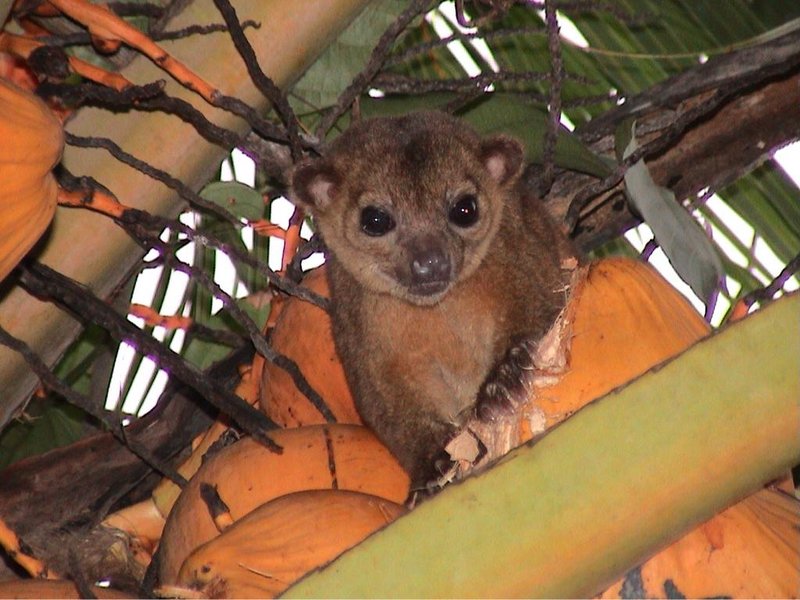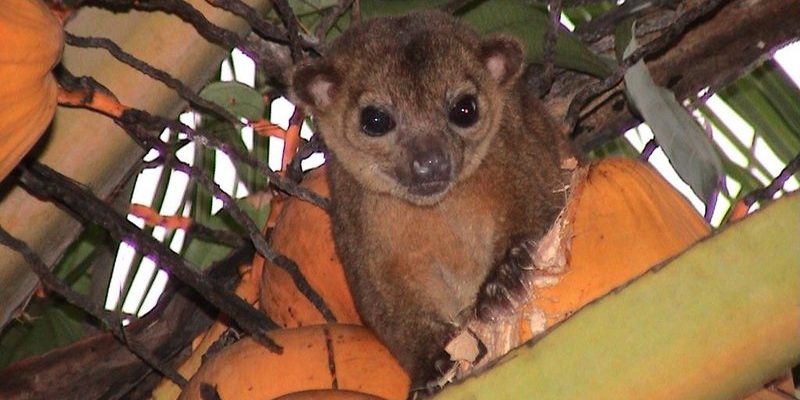
If you’ve ever thought about owning one or just want to know more about this fascinating creature, you’re in the right place. Let’s dive into some of the most common myths and misconceptions about kinkajous, shall we? Think of this as your go-to guide, like a cup of coffee and a good chat with a friend who knows a little more about these amazing animals.
Kinkajous Are Just Like House Cats
You might be surprised to learn that kinkajous are often compared to house cats in terms of their size and playfulness. However, that’s where the similarities end. While cats are primarily solitary animals, kinkajous are social creatures that thrive in groups. They’re also quite a bit more active during the night, making them nocturnal.
Think about it: if you’re used to having a cat curled up on your lap during the day, a kinkajou would likely be swinging from the ceiling at night! They love to explore their surroundings and engage with their environment, which can lead to some interesting (and sometimes chaotic) situations. Their energy levels can be quite high, so if you’re considering a kinkajou as a pet, be prepared for some late-night adventures!
Additionally, while cats often enjoy some alone time, kinkajous need companionship. They bond closely with their families and can become depressed if they feel isolated. So, while they may look cuddly, they require a commitment that’s much more involved than what you might expect with a feline friend.
Kinkajous Are Easy to Care For
Let’s be clear: kinkajous are not your average, low-maintenance pet. Sure, they might be cute, but they come with unique care requirements that can be challenging. For one, their diet is different from many other pets. Kinkajous primarily eat fruit but also need a variety of other foods to stay healthy. Feeding them requires some research and preparation, as not all fruit is suitable for their digestive system.
Also, kinkajous can be quite messy! They are known for being a bit clumsy and will often knock over things in their environment as they explore. You might find yourself cleaning up more often than you would with a typical house pet, which is something to consider if you enjoy a tidy space.
Lastly, their social needs mean you can’t just leave them alone for long periods. They thrive on interaction and might get bored or restless if they’re left to their own devices. In short, while kinkajous are enchanting, they require dedicated care and effort to keep them happy and healthy.
Kinkajous Make Great Pets for Everyone
While kinkajous can be wonderful companions, they are not suitable for everyone. Many people believe that a kinkajou can be a pet just like a dog or a cat, but that’s a misconception. They require a specific type of owner—one who understands exotic animals and is prepared for the challenges that come with them.
For instance, kinkajous need a large, secure enclosure to thrive, along with plenty of space to climb and play. Think of it like creating a mini jungle for them. If you’re living in a small apartment with limited space, a kinkajou might not be the best fit for your lifestyle.
Moreover, their playful, sometimes hyperactive behaviors can be overwhelming for families with young children or for people who prefer quieter pets. It’s crucial to assess your living situation, lifestyle, and experience before considering one of these adorable furballs.
Kinkajous Are Wild Animals and Can Be Tamed Easily
Here’s the thing—kinkajous are indeed wild animals. While they can bond with their owners and become affectionate, they can’t be tamed in the traditional sense like a dog. Many people think that they can train a kinkajou like a pet dog, but that’s simply not the case.
Kinkajous have strong instincts and behaviors that come from their wild nature. They might bite when startled or feel threatened, which can happen if they’re not socialized properly from a young age. This is why it’s essential to obtain a kinkajou from a reputable source that has given them a good start in life and plenty of interaction with people.
A kinkajou can learn to be around humans, but it requires patience and understanding of their unique personalities. They need a lot of love and proper training to help them feel comfortable and secure. It’s not about domestication; it’s about building a trusted relationship where they feel safe.
Kinkajous Are Illegal to Own Everywhere
You might think that owning a kinkajou is illegal everywhere, but that’s not entirely true. Laws regarding exotic pets vary widely depending on where you live. In some places, kinkajous can be kept legally as pets, while in others, restrictions may apply.
Before considering a kinkajou as a pet, it’s crucial to check your local laws and regulations. Some areas require permits or impose strict regulations on exotic pet ownership. Understand what’s involved legally to avoid any surprises down the road.
Even if it’s legal in your area, it’s also wise to think about the ethical implications of owning a wild animal. Are you prepared to provide the environment, care, and socialization that a kinkajou needs? These creatures deserve respect and appropriate care, which goes beyond just following the law.
Kinkajous Are Related to Other Pets
It’s easy to assume that kinkajous are related to other small furry pets, but they belong to a different family altogether. Kinkajous are more closely related to raccoons than they are to cute little ferrets or rabbits. They are part of the Procyonidae family, which includes raccoons and coatis.
You might be wondering how that affects their behavior. Well, being related to raccoons means kinkajous have some interesting traits. They are curious and intelligent, often getting into things just like their raccoon cousins. This can lead to some entertaining antics, but it also means they require stimulation and a lot of mental engagement to keep boredom at bay.
Understanding their lineage can help you appreciate their quirks even more. They’re not just adorable animals; they also play a significant role in their ecosystems, helping to spread seeds and pollinate plants. So, while they might be fun to watch, it’s vital to recognize their importance in the wild.
Kinkajous are indeed fascinating animals, but with that fascination comes a number of misconceptions. From their care needs to their social behaviors, understanding the truth behind these myths is essential for anyone considering bringing one into their home. They may look like cuddly companions, but they need a dedicated owner who understands their unique requirements.
So, if you find yourself smitten with the idea of owning a kinkajou, do your research. Know what you’re getting into and be prepared for a commitment. They have a lot to offer—quirky personalities, deep social bonds, and endless entertainment—but it’s crucial to meet their needs properly.
At the end of the day, kinkajous remind us of the wild, untamed beauty of nature. Whether you choose to admire them from afar or delve into the responsibilities of ownership, understanding the truth about these creatures is a step towards celebrating their uniqueness.

